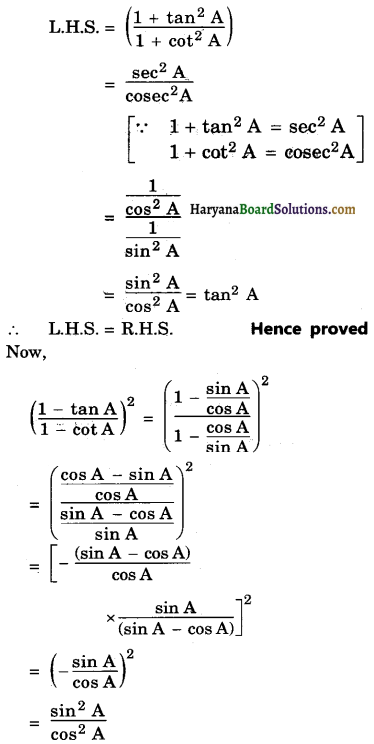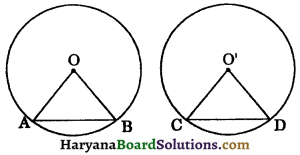Haryana State Board HBSE 9th Class Science Important Questions Chapter 14 प्राकृतिक सम्पदा Important Questions and Answers.
Haryana Board 9th Class Science Important Questions Chapter 14 प्राकृतिक सम्पदा
अति लघूत्तरात्मक प्रश्न
प्रश्न 1.
प्राकृतिक संपदा किसे कहते हैं?
उत्तर:
प्रकृति में उपलब्ध उपयोगी पदार्थ, प्राकृतिक संपदा कहलाते हैं।
प्रश्न 2.
प्राकृतिक संपदाओं के उदाहरण दो।
उत्तर:
वायु, जल, मृदा, खनिज, वन आदि।
प्रश्न 3.
जीवन के लिए आवश्यक कारक कौन-कौन से हैं?
उत्तर:
परिवेश, ताप, पानी और भोजन।
प्रश्न 4.
स्थलमंडल किसे कहते हैं?
उत्तर:
पृथ्वी की सबसे बाहरी परत को स्थलमंडल कहते हैं।
प्रश्न 5.
पृथ्वी के कितने भाग पर जल है?
उत्तर:
75 प्रतिशत भाग पर।

प्रश्न 6.
जलमंडल किसे कहते हैं?
उत्तर:
पृथ्वी के जिस भाग पर जल पाया जाता है, जलमंडल कहलाता है।
प्रश्न 7.
वायुमंडल की परिभाषा लिखो।
उत्तर:
पृथ्वी को वायु का एक आवरण ढके रहता है, वह आवरण वायुमंडल कहलाता है।
प्रश्न 8.
जीवमंडल किसे कहते हैं?
उत्तर:
वायुमंडल, स्थलमंडल और जलमंडल एक-दूसरे से मिलकर जीवन को संभव बनाते हैं, इसे जीवमंडल कहते हैं।
प्रश्न 9.
जीवमंडल के निर्जीव घटकों के नाम लिखो।
उत्तर:
हवा, जल, मिट्टी।
प्रश्न 10.
वायु किसे कहते हैं?
उत्तर:
पृथ्वी पर पाए जाने वाली विभिन्न गैसों, जलवाष्पों व धूलकणों का मिश्रण वायु कहलाता है।
प्रश्न 11.
शुक्र और मंगल ग्रहों पर CO2 की कितनी प्रतिशत मात्रा पाई जाती है?
उत्तर:
95 से 97 प्रतिशत।
प्रश्न 12.
क्या शुक्र और मंगल ग्रहों पर ऑक्सीजन पाई जाती है?
उत्तर:
नहीं।
प्रश्न 13.
पृथ्वी के वायुमंडल में CO2 की प्रतिशत मात्रा कितनी है?
उत्तर:
0.033%।
प्रश्न 14.
क्या चंद्रमा की सतह पर वायुमंडल है?
उत्तर:
नहीं।
प्रश्न 15.
पवनें किसे कहते हैं?
उत्तर:
बहती हुई वायु को पवन या समीर कहते हैं।
प्रश्न 16.
वायु प्रदूषण किसे कहते हैं?
उत्तर:
वायु में अवांछनीय पदार्थों का मिलना वायु प्रदूषण कहलाता है।
प्रश्न 17.
वायु प्रदूषकों के नाम लिखो।
उत्तर:
अपशिष्ट गैसें (CO2, नाइट्रोजन व सल्फर के ऑक्साइड, हाइड्रोकार्बन आदि) जलवाष्प, धूलकण आदि।
प्रश्न 18.
धूम कोहरा किसे कहते हैं?
उत्तर:
सर्दी के मौसम में जब पानी भी हवा के साथ संघनित हो जाए तो, इसे धूम कोहरा कहते हैं।
प्रश्न 19.
वायु प्रदूषण से होने वाली बीमारियों के नाम लिखो।
उत्तर:
श्वास रोग, कैंसर, हृदय रोग, एलर्जी।
प्रश्न 20.
मुख्य रूप से जल कितने प्रकार का होता है?
उत्तर:
दो, खारा और मीठा (अलवणीय)।
प्रश्न 21.
पृथ्वी की सबसे बाहरी परत को क्या कहते हैं?
उत्तर:
भू-पृष्ठ।
प्रश्न 22.
मृदा कैसे बनती है?
उत्तर:
चट्टानों के टूटने से।

प्रश्न 23.
ह्यूमस किसे कहते हैं?
उत्तर:
मृत जीवों के गलने-सड़ने से बने पदार्थ को ह्यूमस या जीवांश कहते हैं।
प्रश्न 24.
मृदा प्रदूषण किसे कहते हैं?
उत्तर:
मृदा में अवांछनीय पदार्थों का मिलना, मृदा प्रदूषण कहलाता है।
प्रश्न 25.
मृदा अपरदन को रोकने में सर्वाधिक सहायक कौन है?
उत्तर:
पेड़-पौधे।
प्रश्न 26.
भूमिगत जल को कैसे प्राप्त करते हैं?
उत्तर:
कुएँ खोद कर।
प्रश्न 27.
हमारे वायुमंडल में कितने प्रतिशत नाइट्रोजन है?
उत्तर:
78%।
प्रश्न 28.
ग्रीन हाउस प्रभाव के लिए सबसे अधिक कौन-सी गैस उत्तरदायी है?
उत्तर:
CO2
प्रश्न 29.
ओजोन परत के ह्रास का प्रमुख कारक लिखो।
उत्तर:
क्लोरोफ्लोरो कार्बन (CFC)।
लघूत्तरात्मक प्रश्न
प्रश्न 1.
प्राकृतिक संपदाएँ किसे कहते हैं?
उत्तर:
प्रकृति में अनेकों मनुष्योपयोगी पदार्थ पाए जाते हैं, जिन्हें प्राकृतिक संपदाएँ कहते हैं; जैसे वायु, जल, मृदा, वन खनिज और जीव-जंतु।
प्रश्न 2.
वायुमंडल किसे कहते हैं? वायुमंडल का जीवों के लिए क्या महत्त्व है?
उत्तर:
पृथ्वी के चारों ओर वायु का एक अदृश्य आवरण पाया जाता है, जिसे वायुमंडल कहते हैं। वायुमंडल पृथ्वी तल से 40 कि०मी० की ऊँचाई तक फैला है। समस्त वायु का 99% भाग इसी क्षेत्र में पाया जाता है। पृथ्वी से 1,000 कि०मी० ऊँचाई में भी वायु की कुछ मात्रा पाई जाती है। जलवाष्प और धूलकण केवल पृथ्वी तल के नजदीक ही पाए जाते हैं। 10-12 कि०मी० की ऊँचाई से ऊपर जलवाष्प नहीं पाए जाते। वायुमंडल में जीवन प्रदान करने वाली ऑक्सीजन गैस पाई जाती है। ओज़ोन की परत पृथ्वी को सूर्य की पराबैंगनी किरणों से बचाती है।
प्रश्न 3.
वायुमंडल में उपस्थित ऑक्सीजन के दो उपयोग लिखो।
उत्तर:
ऑक्सीजन के उपयोग निम्नलिखित हैं-
- ग्लूकोज़ अणुओं को तोड़कर उससे ऊर्जा प्राप्त करने में ऑक्सीजन का उपयोग होता है।
- दहन क्रिया में ऑक्सीजन का उपयोग होता है और कार्बन डाइऑक्साइड का उत्पादन होता है।
प्रश्न 4.
हवाओं का असमान विधि से गर्म होने के अतिरिक्त, चलने के अन्य क्या कारण हैं?
उत्तर:
पृथ्वी पर हवाएँ असमान विधि से गर्म होने के कारण चलती हैं परंतु इसके अन्य दो और भी कारण हैं-
- पृथ्वी की घूर्णन गति
- हवा के मार्ग में आने वाली पर्वत श्रृंखलाएँ।
प्रश्न 5.
वर्षा कैसे होती है? ओलावृष्टि किसे कहते हैं?
उत्तर:
दिन के समय विभिन्न जल-स्रोतों व वनस्पतियों का जल वाष्प बनकर वायु में मिल जाता है। गर्म हवा जलवाष्पों को अपने साथ ऊपर ले जाती है, जहाँ ठंड के कारण जलवाष्प संघनित होकर जल की बूंदें बन जाते हैं। यही पानी की बूंदें बड़ी होकर भारी हो जाती हैं। यही बूंदें वर्षा के रूप में पृथ्वी पर बरसती हैं। कई बार जल की बूंदें और ठंडी होकर ठोस बर्फ बन जाती हैं, जिन्हें ओले कहते हैं और ओलों की वर्षा ओलावृष्टि कहलाती है।
प्रश्न 6.
वायु प्रदूषण किसे कहते हैं? इसके कारकों का उल्लेख कीजिए।
उत्तर:
वायु प्रदूषण-अवांछित पदार्थों का वायु में मिलकर उसे जीवों के लिए हानिकारक बना देना, वायु प्रदूषण कहलाता है। वायु प्रदूषण के कारक-वायु प्रदूषण के प्राकृतिक कारक निम्नलिखित हैं-
- ज्वालामुखी क्रियाओं के साथ निकली गैसें तथा कण।
- आंधियाँ।
- जंगलों में लगने वाली आग से उत्पन्न धुआँ और गैसें।
- दलदलों से उत्पन्न मीथेन गैस।
- पौधों तथा जंतुओं का अपघटन तथा परागकण आदि।
वायु प्रदूषण के कृत्रिम कारक निम्नलिखित हैं-
- वाहनों का धुआँ।
- ईंधन का जलना।
- औद्योगिक धुएँ और वाष्पशील पदार्थ।
- धातु-निष्कर्षण क्रियाएँ।
- खनिजों के खनन से।
- कीटनाशक दवाइयाँ।
- परमाणु ऊर्जा उत्पन्न करते समय उत्सर्जित रेडियो विकिरण।
प्रश्न 7.
धूम कोहरा क्या है? इसके कुप्रभाव बताओ।
उत्तर:
धुएँ तथा धूलकणों का कोहरे में उपस्थित जल की बूंदों के साथ संयोग होने से धूम कोहरा बनता है। इसमें घरों, कारखानों तथा वाहनों में प्रयुक्त ईंधनों के दहन में बनी विषैली गैसें भी मिली होती हैं।
धुआँ तथा धूल + कोहरा तथा विषैली गैसें → धूम कोहरा
धूम कोहरे में उपस्थित विषैली गैसें सल्फर डाइऑक्साइड (SO2) या परऑक्सी ऐसिटिल नाइट्रेट (PAN) होती है। यह धूम कोहरा वायुमंडल में ऊँचा नहीं उठता, परंतु महासागर के ऊपर एक प्रकार का बादल बना देता है। यह सामान्यतः शीतकाल में अधिक बनता है।
कुप्रभाव-धूम कोहरे के कुप्रभाव निम्नलिखित हैं-
- यह यातायात में बाधा डालता है क्योंकि इसके कारण बहुत कम दूरी तक दिखाई देता है।
- यह आँख, नाक तथा गले में जलन उत्पन्न करता है।
- धूम कोहरा उन सभी जीवों के लिए हानिकारक है, जिनके शरीर में यह सांस द्वारा प्रवेश कर सकता है। इससे दमा व हृदय संबंधी रोग उत्पन्न हो जाते हैं।
- पौधों की वृद्धि तथा विकास पर इसका बुरा प्रभाव पड़ता है।
प्रश्न 8.
अम्लीय वर्षा किसे कहते हैं?
उत्तर:
वातावरण में मिलने वाली अम्लीय गैसें; जैसे सल्फर डाइऑक्साइड, नाइट्रोजन डाइऑक्साइड, हाइड्रोजन क्लोराइड आदि वर्षा के जल की बूंदों में घुलकर अम्ल बनाती हैं, इन्हीं अम्लों की वर्षा अम्लीय वर्षा कहलाती है। अम्लीय वर्षा ऐतिहासिक इमारतों, चट्टानों एवं वनस्पति पेड़-पौधों के लिए हानिकारक होती है।
प्रश्न 9.
प्राकृतिक जल के मुख्य स्रोतों का वर्णन करो।
उत्तर:
प्राकृतिक जल के मुख्य स्रोत निम्नलिखित हैं-
1. वर्षा का जल-यह प्राकृतिक जल का सबसे शुद्ध रूप है। वर्षा का जल स्वाद रहित होता है। फिर भी, पृथ्वी तक पहुँचने के दौरान वर्षा के जल में वायु में उपस्थित ऑक्सीजन, नाइट्रोजन तथा कार्बन डाइऑक्साइड जैसी कुछ गैसें घुल जाती हैं। पृथ्वी की सतह पर पहुँचने वाला वर्षा का जल अशुद्ध होता है।
2. झरनों या कुओं का जल-वर्षा का जल रिसकर पृथ्वी के नीचे चला जाता है। इस प्रकार वर्षा का जल भू-तल से बहुत नीचे संगृहीत हो जाता है। यह भूमिगत जल काफी साफ होता है। इसमें बहुत कम निलंबित ठोस उपस्थित होते हैं।
3. नदियों का जल-पहाड़ों पर पड़ी बर्फ जब पिघलती है तो पानी बन जाता है। पहाड़ों से यह पानी नदियों में आता है। इस जल में पर्याप्त मात्रा में निलंबित मिट्टी के कण विद्यमान होते हैं। नदियों के पानी का प्रयोग सिंचाई के लिए किया जाता है।
4. समुद्रीय जल-समस्त नदियों का पानी अंततः समुद्र में पहुंचता है। जहां नदी समुद्र से मिलती है, उस स्थान पर नदी द्वारा लाई गई मिट्टी तथा तलछट एकत्रित हो जाते हैं। नदियों के जल में घुले पदार्थ विशेषकर लवण समुद्र के पानी में पहुँच जाते हैं।
प्रश्न 10.
जल प्रदूषण किसे कहते हैं? जल प्रदूषण के कारण लिखो।
उत्तर:
जल प्रदूषण-जल में अवांछनीय पदार्थों का मिलना जल प्रदूषण कहलाता है। जल प्रदूषण के निम्नलिखित कारण हैं-
- उद्योग-धंधों से निकला कचरा व रासायनिक पदार्थ आदि।
- कृषि अपशिष्ट; जैसे उर्वरक, कीटनाशक, पीड़कनाशी, खरपतवारनाशी आदि।
- घरेलू गंदगी व सीवेज मल-जल; जैसे कूड़ा-कचरा, पॉलिथीन आदि।
- तापीय गंदगी; जैसे विद्युत ताप घरों का गर्म जल आदि।
- रेडियोधर्मी अपशिष्ट; जैसे रेडियो एक्टिव पदार्थों का कचरा।
- सामाजिक-धार्मिक अपशिष्ट, मेलों का अपशिष्ट, मृत मनुष्यों के शव, मृत पशु आदि को नदियों में डालना।
- प्राकृतिक स्रोत; जैसे खनन, आँधी-तूफान, आपदाओं आदि से निकला कचरा व अपशिष्ट मल, मृत पशु आदि।
प्रश्न 11.
ह्यूमस की उपयोगिता लिखो।
उत्तर:
ह्यूमस की उपयोगिता निम्नलिखित है-
- मिट्टी में ह्यूमस मिलने से मिट्टी सरंध्र बन जाती है, जो हवा और पानी को भूमि के भीतर जाने में मदद करता है।
- ह्यूमस में पौधों के लिए आवश्यक पोषक तत्व पाए जाते हैं।
- ह्यूमस से अनेकों जीव पोषण ग्रहण करते हैं जैसे; केंचुआ।
- रेतीली मिट्टी में ह्यूमस मिलाने से मिट्टी में जल धारण करने की क्षमता बढ़ जाती है।
- रेतीली मिट्टी में ह्यूमस मिलने से मृदा अपरदन भी कम होता है।
प्रश्न 12.
मृदा प्रदूषण के चार सामान्य स्रोत लिखें।
उत्तर:
मृदा प्रदूषण के चार सामान्य स्रोत निम्नलिखित हैं-
- मृदा में उर्वरकों का अत्यधिक प्रयोग करना।
- मृदा पर फसलों को बचाने के लिए अत्यधिक कीटनाशकों व पीड़कनाशकों का छिड़काव करना।
- मृदा में रसोई घर तथा घर के अन्य कूड़े-कचरे को मिलाना।
- उद्योगों से निकले अपशिष्ट पदार्थों को मृदा में मिलने देना।
प्रश्न 13.
जल-चक्र के विषय में आप क्या जानते हो?
उत्तर:
पृथ्वी पर जल के विभिन्न स्रोत तालाब, झील, नदी तथा सागर हैं। जल-चक्र के अनुसार इन स्रोतों का पानी वाष्पित होकर जलवाष्प बनाता है। ये जलवाष्प बादल बनाते हैं। ठंडे होने पर बादल संघनितं होकर जल की बूंदें बनाते हैं। वर्षा के रूप में जल पुनः पृथ्वी तल पर वापिस आ जाता है। जल के इस चक्र को ‘जल-चक्र’ कहते हैं।
प्रश्न 14.
नाइट्रोजन किन-किन पदार्थों में पाया जाता है?
उत्तर:
नाइट्रोजन प्रमुख रूप से प्रोटीन, न्यूक्लिक अम्ल, डी०एन०ए०, आर०एन०ए०, विटामिन आदि में पाया जाता है। ऐल्केलाइड और यूरिया में भी नाइट्रोजन पाया जाता है।
प्रश्न 15.
पृथ्वी पर कार्बन कौन-कौन सी अवस्थाओं में पाई जाती है?
उत्तर:
पृथ्वी में कार्बन मूल रूप से हीरा व ग्रेफाइट में, यौगिक रूप में कार्बन डाइऑक्साइड, कार्बोनेट्स में, कार्बन आधारित अवयवों कार्बोहाइड्रेट्स, वसा, न्यूक्लिक अम्ल और विटामिनों में पाई जाती है। कार्बन सभी उन उत्पादों में भी पाई जाती है, जो प्रकाशसंश्लेषण क्रिया से बनते हैं; जैसे मंड, ग्लूकोस आदि।

प्रश्न 16.
हरे पौधे किस प्रकार मंड का निर्माण करते हैं?
उत्तर:
पौधे कार्बन डाइऑक्साइड के रूप में वायुमंडल से कार्बन ग्रहण करते हैं। सूर्य के प्रकाश से प्राप्त ऊर्जा के द्वारा पौधे इस कार्बन डाइऑक्साइड का संयोग जल के अणुओं से करते हैं, जिसके फलस्वरूप कार्बोहाइड्रेट और वसा के अणुओं का निर्माण होता है।

ये कार्बोहाइड्रेट तथा वसा ही जीवधारियों को ऊर्जा प्रदान करते हैं, जिससे जीवधारियों की जीवन प्रक्रियाएँ संपन्न होती हैं।
प्रश्न 17.
ग्रीन हाउस प्रभाव के दो लाभ लिखो।
उत्तर:
ग्रीन हाउस प्रभाव के दो लाभ निम्नलिखित हैं-
- ग्रीन हाउस प्रभाव सूर्य की अवरक्त विकिरणों को प्रगृहीत करके पृथ्वी की सतह तथा वायुमंडल का ताप बढ़ा देता है, जिससे ठंडी जलवायु में भी जीवन बना रहता है।
- ग्रीन हाउस प्रभाव के कारण पर्वतों की बर्फीली चोटियों पर पड़ी बर्फ धीरे-धीरे पिघलती रहती है, जिससे नदियों में सारा वर्ष पानी बना रहता है।
प्रश्न 18.
पृथ्वी पर ऑक्सीजन किन रूपों में पाई जाती है?
उत्तर:
हमारे वायुमंडल में ऑक्सीजन 21 प्रतिशत पाई जाती है। यौगिक रूप में कार्बन डाइऑक्साइड में ऑक्सीजन विद्यमान है। पटल में धातुओं और सिलिकॉन के ऑक्साइड, कार्बोनेट, सल्फेट, नाइट्रेट और कुछ अन्य खनिजों में भी ऑक्सीजन पाई जाती है। जैविक अणु; जैसे कार्बोहाइड्रेट्स, प्रोटीन, न्यूक्लिक अम्ल और वसा में भी ऑक्सीजन विद्यमान है।
प्रश्न 19.
क्या होगा यदि वायुमंडल से ओजोन परत लुप्त हो जाए?
उत्तर:
पृथ्वी की सतह से 15 कि०मी० की ऊँचाई पर ओज़ोन-(O3) की परत है। यह ऊँचाई के साथ-साथ मोटी होती जाती है। 23 कि०मी० की ऊँचाई पर यह सबसे अधिक मोटी है। यह परत सूर्य के प्रकाश में उपस्थित पराबैंगनी प्रकाश को अवशोषित र लेती है। यह पराबैंगनी प्रकाश जीवों में त्वचा कैंसर उत्पन्न कर देता है।
इसलिए यदि वायुमंडल से ओज़ोन परत लुप्त हो जाए तो एक रक्षात्मक आवरण समाप्त हो जाएगा। हानिकारक पराबैंगनी प्रकाश हम तक पहुँचकर हममें व अन्य जीवों में त्वचा कैंसर उत्पन्न कर देगा। इससे वायुमंडल को भारी नुकसान होगा। साथ ही पराबैंगनी विकिरण मोतियाबिंद और ताप दाह रोग का कारण बनेगा। पेड़-पौधों की कोशिकाओं का विभाजन भी रुक जाएगा।
निबंधात्मक प्रश्न
प्रश्न 1.
प्रकृति में जल-चक्र किस प्रकार संपन्न होता है?
उत्तर:
जल, पर्यावरण में लगातार परिवहित होता रहता है। इसको जलीय चक्र (Hydrological Cycle) कहते हैं।
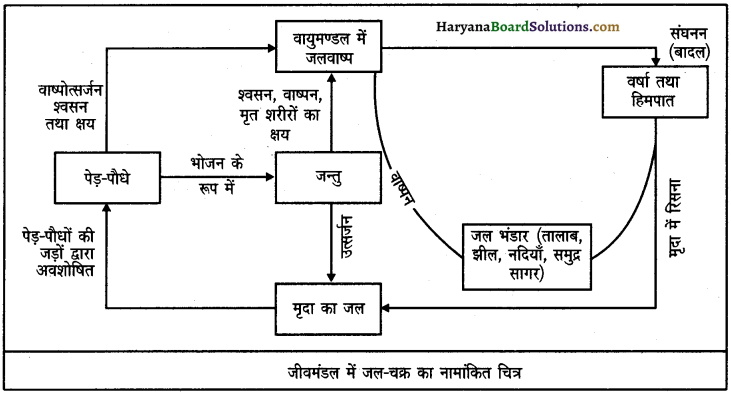
जल में मुख्य तत्त्व हाइड्रोजन है जिसका चक्रण पानी के यौगिक के रूप में प्रवाहित होने के साथ होता है। जलाशयों (सागर, समुद्र, झील, नदियाँ) तथा जैव जीवों के शरीर की सतह से जल का लगातार वाष्पन होता रहता है तथा वायु में मिलता रहता है। इसके अतिरिक्त पौधों द्वारा भूमि में से अवशोषित जल भी वाष्पोत्सर्जन द्वारा (पत्तों के रंध्रों से) वायु में मिलता रहता है।
जंतुओं द्वारा भोजन के साथ ग्रहण किया गया जल भी श्वसन क्रिया द्वारा वाष्पों के रूप में वायुमंडल में मिलता रहता है। इस प्रकार विभिन्न स्रोतों से जल वाष्पों के रूप में वायुमंडल में मिलता रहता है। वायुमंडल में उपस्थित जलवाष्प न्यून ताप पर संघनित होकर जल की बूंदें बनाते हैं। ये बूंदें वर्षा अथवा हिम के रूप में बरसती हैं और इस प्रकार जल पुनः पृथ्वी (मृदा एवं जलाशय) पर वापिस आ जाता है। इस प्रकार जीवमंडल में जल-चक्र चलता रहता है।
प्रश्न 2.
नाइट्रोजन चक्र का संक्षिप्त विवरण कीजिए।
उत्तर:
प्रोटीन नाइट्रोजन के यौगिक हैं। ये पौधे तथा प्राणियों के शरीर का एक मुख्य अंग हैं। प्रोटीन की कमी से पौधों तथा जंतुओं की वृद्धि रुक जाती है, क्योंकि प्रोटीन से ही जीवों में वृद्धि होती है। जंतु पौधों से भोजन प्राप्त करते हैं। इसमें प्रोटीन भी होती है। जब पौधे तथा जंतु मरकर गलते-सड़ते हैं तो विशेष प्रकार के अपघटक जीवाणु व कवक (Saprophytic Bacteria) इन्हें अमोनिया के लवणों में बदल देते हैं।
इन लवणों को नाइट्रेट बनाने वाले जीवाणु (Nitrifying Bacteria) नाइट्रेट में बदल देते हैं। इन नाइट्रेटों का कुछ भाग तो पौधों की जड़ों के रोम ग्रहण करके उन्हें प्रोटीन में बदल देते हैं। शेष नाइट्रेट विनाइट्रीकारक जीवाणुओं द्वारा नाइट्रोजन में बदल जाते हैं। इस प्रकार नाइट्रोजन पुनः वायुमंडल में आ जाती है। वायुमंडलीय नाइट्रोजन को स्थिर करने वाले जीवाणु मिट्टी तथा अन्य फलीदार पौधों (लैग्यूम) की जड़ों में पाई जाने वाली मूल-ग्रंथियों में पाए जाते हैं।
ये जीवाणु स्वतंत्र नाइट्रोजन को इसके यौगिकों में बदल देते हैं, जिन्हें पौधे ग्रहण कर लेते हैं। वायुमंडलीय नाइट्रोजन का कुछ भाग आकाशीय बिजली द्वारा भूमि में स्थिर होता रहता है। फैक्ट्रियों में बनाए जाने वाले उर्वरक भी नाइट्रोजन का स्थिर रूप हैं। यह नाइट्रोजन पौधों द्वारा अवशोषित होकर नाइट्रोजन खाद्य जाल में से गुजरती है। इस प्रकार प्रकृति में यह नाइट्रोजन चक्र लगातार चलता रहता है।

प्रश्न 3.
जीवमंडल में कार्बन चक्र किस प्रकार संपन्न होता है? विवरण दीजिए।
उत्तर:
कार्बन सभी जीवों के शरीर का एक मुख्य तत्त्व है। जीवों में यह कार्बोहाइड्रेट्स, वसा, प्रोटीन तथा न्यूक्लिक अम्लों के रूप में पाया जाता है। इसका स्थानांतरण आहार श्रृंखला के माध्यम से होता है। वायुमंडल में यह CO2 के रूप में पाई जाती है। महासागरों में यह जैव कार्बन व कार्बोनेटों के रूप में मिलती है। हरे पौधे प्रकाशसंश्लेषण की विधि में CO2 का उपयोग करके कार्बोहाइड्रेट्स का निर्माण करते हैं।
ये कार्बोहाइड्रेट्स फिर जंतुओं में स्थानांतरित हो जाते हैं। अपघटक इन्हें फिर से पर्यावरण में मुक्त कर देते हैं। सभी जीव अपनी श्वसन प्रक्रिया के दौरान CO2 उत्पन्न करते हैं। कार्बन-युक्त ईंधनों के दहन से भी वायुमंडल में CO2 की मात्रा बढ़ती है। ज्वालामुखी विस्फोट भी CO2 की प्राप्ति का मुख्य साधन है।
प्रश्न 4.
प्रकृति में ऑक्सीजन चक्र का एक नामांकित चित्र बनाइए।
उत्तर:
प्रकृति में ऑक्सीजन वायुमंडल के गैसीय घटकों का लगभग 21% भाग है। यह जल भंडारों में घुली होती है, जिसका उपयोग जलीय जीव श्वसन में करते हैं। यह जैव शरीरों में CO2 तथा H2O के यौगिक रूप में प्रवेश और निर्गम करती है। जीवमंडल में ऑक्सीजन उपलब्ध कराने वाले प्रमुख स्रोत हरे पौधे हैं। ऑक्सीजन चक्र के दो चरण अग्रलिखित हैं-
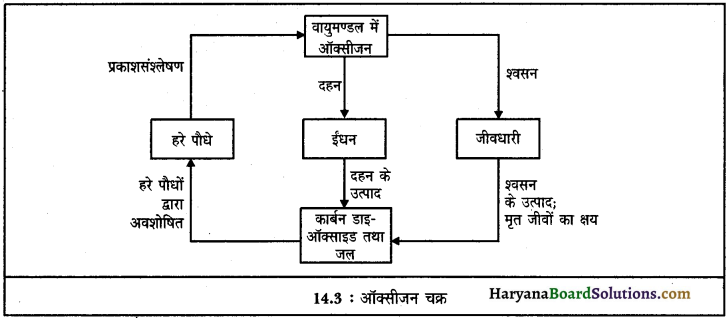
1. ऑक्सीजन का वायुमंडल में आगमन-विभिन्न माध्यमों से पहुँची कार्बन डाइऑक्साइड का उपयोग हरे पौधे प्रकाशसंश्लेषण क्रिया में करते हैं। प्रकाशसंश्लेषण क्रिया में ऑक्सीजन सह-उत्पाद के रूप में उत्पन्न होती है।
2. ऑक्सीजन का वायुमंडल से निर्गमन-वायुमंडलीय ऑक्सीजन का उपयोग सभी जीवधारी श्वसन में करते हैं.और CO2 के रूप में वायुमंडल में छोड़ते हैं। इसी प्रकार जल भंडारों में विलेय ऑक्सीजन का उपयोग जलीय जीव करते हैं और CO2 के रूप में जल में ही छोड़ते हैं।
कोयला, लकड़ी तथा अन्य ईंधनों के दहन में भी वायुमंडलीय ऑक्सीजन का उपयोग किया जाता है और CO2 के रूप में वायुमंडल में छोड़ दी जाती है।
इस प्रकार वायुमंडल में ऑक्सीजन के आगमन और निर्गमन से वायुमंडलीय संतुलन बना रहता है।
प्रयोगात्मक कार्य
क्रियाकलाप 1.
संवहन धाराओं का अध्ययन करना।
कार्य-विधि-एक बीकर में एक मोमबत्ती रख कर जलाएँ और एक अगरबत्ती को जलाकर बीकर के मुँह के पास ले जाओ। और अवलोकन करो
- अगरबत्ती को बीकर के मुँह के पास ले जाने पर धुआँ पीछे को जाता है क्योंकि गर्म हवा बाहर निकल रही है।
- अगरबत्ती को मोमबत्ती के ऊपर रखने से धुआँ एकदम ऊपर की ओर जाता है क्योंकि मोमबत्ती की ज्वाला से ऊपर की वायु तेजी से गर्म होकर सीधी ऊपर की ओर जाती है।
- दूसरे भागों में अगरबत्ती को रखने पर धुआँ पीछे की ओर ही जाता है क्योंकि बीकर के अंदर की सारी वायु गर्म होकर बाहर निकल रही है।
क्रियाकलाप 2.
कोहरा बनने की प्रक्रिया का अध्ययन करना।
कार्य-विधि-
- पतले प्लास्टिक के बोतल में 5 से 10 मि०ली० पानी लेकर ढक्कन बंद कर दें।
- इसे अच्छी तरह हिलाएँ और एक जलती अगरबत्ती का थोड़ा धुआँ, ढक्कन खोलकर अंदर जाने दें। ढक्कन बंद कर दें।
- बोतल को हथेलियों के बीच रखकर जोर से दबाएँ। थोड़ी देर के बाद पुनः बोतल को दबाएँ और अवलोकन करें। जलवाष्प संतप्त होने और दबाव बढ़ने पर बोतल में कोहरा बनता है और बोतल को थोड़ी देर रखने पर कोहरा समाप्त हो जाता है। बोतल को हिलाने या दबाने पर बोतल में दाब बढ़ जाता है। अगरबत्ती के धुएँ के कणों के चारों तरफ जलवाष्प एकत्रित होने पर ही कोहरा बना।
क्रियाकलाप 3.
वर्षामापन यंत्र बनाना तथा अपने नगर व राज्य की सबसे अधिक वर्षा का समय नोट करना।
कार्य-विधि-काँच के बीकर के मुँह के आकार की एक काँच की कीप को बीकर के मुँह में अच्छे से फिट करो तथा बीकर की दीवार पर चिह्न लगाकर पैमाना बनाओ।
वर्षामापन-वर्षा शुरू होते ही वर्षामापन यंत्र को ऐसे स्थान पर रखो, जहाँ बिना किसी बाधा के वर्षा जल कीप में गिरे। वर्षा की समाप्ति पर पाठ्यांक नोट करो। इस यंत्र द्वारा निर्धारित समय (महीनों) की प्रतिदिन की वर्षा की मात्रा को नोट करो। इस प्रकार सर्वाधिक वर्षा वाला दिन मालूम हो जाएगा।
किसी राज्य की सर्वाधिक वर्षा नोट करने के लिए राज्य के प्रमुख नगरों में वर्षा की मात्रा नोट कर औसत वर्षा ज्ञात की जाती है।
अध्याय का तीव्र अध्ययन
1. शुक्र और मंगल के वायुमंडल से भिन्न हमारे वायुमंडल में पाई जाने वाली गैस है-
(A) कार्बन डाइऑक्साइड
(B) ऑक्सीजन
(C) ऑर्गन
(D) नाइट्रोजन
उत्तर:
(B) ऑक्सीजन
2. वायु प्रवाह का कारण होता है-
(A) दाब अंतर
(B) ताप अंतर
(C) घनत्व अंतर
(D) सतह अंतर
उत्तर:
(A) दाब अंतर
3. निम्नलिखित में से कौन वायु को प्रदूषित करते हैं?
(A) जीवाश्म ईंधनों का जलना
(B) वाहनों का चलना
(C) कारखानों का धुआँ
(D) उपर्युक्त सभी
उत्तर:
(D) उपर्युक्त सभी
4. शुद्ध जल का स्रोत होता है-
(A) वर्षा
(B) तालाब
(C) नदियाँ
(D) झीलें
उत्तर:
(A) वर्षा
5. केंचुए किस कार्य में सहायक होते हैं?
(A) नाइट्रोजन बनाने में
(B) ह्यूमस बनाने में
(C) उर्वरता कम करने में
(D) उपर्युक्त सभी
उत्तर:
(B) ह्यूमस बनाने में

6. वर्षा का पैटर्न किस कारक पर निर्भर करता है?
(A) पवन पैटर्न पर
(B) जंगल पैटर्न पर
(C) वाष्पन पैटर्न पर
(D) लोगों के रहन-सहन पैटर्न पर
उत्तर:
(A) पवन पैटर्न पर
7. मिट्टी का निर्माण होता है-
(A) चट्टानों के टूटने-फूटने से
(B) वर्षा से
(C) वायु से
(D) जल से
उत्तर:
(A) चट्टानों के टूटने-फूटने से
8. मिट्टी अपरदन के प्रमुख कारण हैं-
(A) बाढ़ें
(B) तेज हवाएँ
(C) वनों की कटाई
(D) उपर्युक्त सभी
उत्तर:
(D) उपर्युक्त सभी
9. जैविक रूप में महत्त्वपूर्ण दो यौगिक जिनमें ऑक्सीजन और नाइट्रोजन दोनों हैं-
(A) नाइट्रेट्स और नाइट्राइट्स
(B) अमोनिया व कार्बन डाइऑक्साइड
(C) नाइट्रोजन डाइऑक्साइड व अमोनिया
(D) यूरिया व अमोनिया
उत्तर:
(A) नाइट्रेट्स और नाइट्राइट्स
10. वायुमंडल में उपस्थित CO2 द्वारा पृथ्वी तल से परावर्तित अवरक्त प्रकाश को अवशोषित कर वायुमंडल का ताप बढ़ना कहा जाता है-
(A) ओजोन छिद्र
(B) ग्रीन हाउस प्रभाव
(C) पराबैंगनी प्रभाव
(D) अवशोषण प्रभाव
उत्तर:
(B) ग्रीन हाउस प्रभाव
11. जीवन के लिए वायुमंडल से हमें प्राप्त होती है-
(A) CO2
(B) O3
(C) O2
(D) N2
उत्तर:
(C) O2
12. प्राकृतिक संपदाएँ हैं-
(A) वायु
(B) जल
(C) खनिज
(D) उपर्युक्त सभी
उत्तर:
(D) उपर्युक्त सभी
13. पृथ्वी की सबसे बाहरी परत को कहा जाता है-
(A) जलमंडल
(B) स्थलमंडल
(C) वायुमंडल
(D) ओज़ोन मंडल
उत्तर:
(B) स्थलमंडल
14. पृथ्वी के लगभग कितने भाग पर जल है?
(A) 75%
(B) 25 %
(C) 50%
(D) 20 %
उत्तर:
(A) 75%
15. जीवमंडल के निर्जीव घटक हैं-
(A) हवा
(B) जल
(C) मिट्टी
(D) उपर्युक्त सभी
उत्तर:
(D) उपर्युक्त सभी
16. दहन क्रिया में उत्पन्न होने वाली गैस है-
(A) ऑक्सीजन
(B) नाइट्रोजन
(C) कार्बन डाइऑक्साइड
(D) हीलियम
उत्तर:
(C) कार्बन डाइऑक्साइड
17. ओजोन का सूत्र होता है
(A) O2
(B) O3
(C) O4
(D) O5
उत्तर:
(B) O3
18. प्रकाशसंश्लेषण के लिए आवश्यक है-
(A) सूर्य का प्रकाश
(B) क्लोरोफिल
(C) जल व कार्बन डाइऑक्साइड
(D) उपर्युक्त सभी
उत्तर:
(D) उपर्युक्त सभी
19. नाइट्रोजन और सल्फर के ऑक्साइड उपस्थित होते हैं
(A) अम्लीय वर्षा में
(B) क्षारीय वर्षा में
(C) सामान्य वर्षा में
(D) उपर्युक्त सभी
उत्तर:
(A) अम्लीय वर्षा में
20. पृथ्वी के वायुमंडल में CO2 की प्रतिशत मात्रा है-
(A) 78%
(B) 21%
(C) 0.33%
(D) 0.033%
उत्तर:
(D) 0.033%
21. दिन के समय हवा की दिशा होती है-
(A) समुद्र से स्थल की ओर
(B) स्थल से समुद्र की ओर
(C) उत्तर से पश्चिम की ओर
(D) पश्चिम से उत्तर की ओर
उत्तर:
(A) समुद्र से स्थल की ओर
22. वायु प्रदूषक है-
(A) CO
(B) NO2
(C) SO2
(D) उपर्युक्त सभी
उत्तर:
(D) उपर्युक्त सभी
23. मृदा में अवांछनीय पदार्थों का मिलना कहलाता है-
(A) जल प्रदूषण
(B) वायु प्रदूषण
(C) मृदा प्रदूषण
(D) ध्वनि प्रदूषण
उत्तर:
(C) मृदा प्रदूषण
24. जीवाणुओं द्वारा वायुमंडल की नाइट्रोजन को नाइट्रेट्स व नाइट्राइट्स में बदलना कहलाता है-
(A) ऑक्सीजन स्थिरीकरण
(B) विनाइट्रीकरण
(C) नाइट्रोजन स्थिरीकरण
(D) अमोनीकरण
उत्तर:
(C) नाइट्रोजन स्थिरीकरण
25. वायुमंडल में ऑक्सीजन की प्रतिशत मात्रा है-
(A) 78 प्रतिशत
(B) 21 प्रतिशत
(C) 0.033 प्रतिशत
(D) 0.01 प्रतिशत
उत्तर:
(B) 21 प्रतिशत

26. ओजोन परत सौर प्रकाश के कौन-से घटक को अवशोषित करती है?
(A) दृश्य प्रकाश को
(B) अवरक्त विकिरण को
(C) पराबैंगनी विकिरण को
(D) इनमें से कोई नहीं
उत्तर:
(C) पराबैंगनी विकिरण को
27. मृदा एक प्राकृतिक संपदा होती है जो
(A) पौधों को आवश्यक पोषक तत्त्व प्रदान करती है
(B) जीवित रहने के लिए व विकास के लिए आवश्यक है
(C) खाद्य-पदार्थों को प्रदान करती है
(D) उपर्युक्त सभी
उत्तर:
(D) उपर्युक्त सभी
28. ऊर्जा का नवीकरणीय स्रोत है-
(A) मिट्टी का तेल
(B) कोयला
(C) प्राकृतिक गैस
(D) बायोगैस
उत्तर:
(D) बायोगैस
29. किस ग्रह पर जीवन विद्यमान है?
(A) मंगल पर
(B) पृथ्वी पर
(C) बुध पर
(D) शुक्र पर
उत्तर:
(B) पृथ्वी पर
30. जीवमंडल के जैविक घटक होते हैं-
(A) निर्जीव
(B) सजीव
(C) हवा
(D) जल
उत्तर:
(B) सजीव
31. शुक्र ग्रह पर 95% से 97% के लगभग होती है-
(A) नाइट्रोजन गैस
(B) ऑक्सीजन गैस
(C) कार्बन डाइऑक्साइड गैस
(D) ऑर्गन गैस
उत्तर:
(C) कार्बन डाइऑक्साइड गैस
32. रात के समय हवा की दिशा होती है-
(A) समुद्र से स्थल की ओर
(B) स्थल से समुद्र की ओर
(C) उत्तर से पश्चिम की ओर
(D) पश्चिम से उत्तर की ओर
उत्तर:
(B) स्थल से समुद्र की ओर
33. समुद्रों में सामान्यतः कैसा पानी मिलता है?
(A) शुद्ध
(B) अशुद्ध
(C) (A) व (B) दोनों
(D) (A) व (B) दोनों में से कोई नहीं
उत्तर:
(B) अशुद्ध
34. कीटनाशकों और उर्वरकों के अधिक प्रयोग से बढ़ावा मिलता है-
(A) वायु प्रदूषण को
(B) ध्वनि प्रदूषण को
(C) जल प्रदूषण को
(D) इनमें से किसी को भी नहीं
उत्तर:
(C) जल प्रदूषण को
35. ओजोन परत में छिद्र किस स्थान पर देखा गया?
(A) विषुवत रेखा के ऊपर
(B) प्रशांत महासागर के ऊपर
(C) अंटार्कटिका के ऊपर
(D) हिंद महासागर के ऊपर
उत्तर:
(C) अंटार्कटिका के ऊपर
36. अम्लीय वर्षा का निम्न में से कौन-सा कारण है?
(A) वायु में नाइट्रोजन व सल्फर के ऑक्साइड
(B) वायु में लटके हुए कणों की मात्रा बढ़ना
(C) वायु में हाइड्रोकार्बन की अधिक मात्रा
(D) वायु में CO2 गैस की अधिक मात्रा होना
उत्तर:
(A) वायु में नाइट्रोजन व सल्फर के ऑक्साइड
37. निम्नलिखित में से कौन-सा एक कथन जल प्रदूषण के बारे में सही नहीं है?
(A) जलाशयों में अनैच्छिक पदार्थों का मिलना
(B) पानी में घुली हुई ऑक्सीजन कम होना
(C) पानी के तापमान में परिवर्तन
(D) आक्सी-श्वसन जीवाणु (ऐरोबिक बैक्टीरिया) की संख्या बढ़ना
उत्तर:
(D) आक्सी-श्वसन जीवाणु (ऐरोबिक बैक्टीरिया) की संख्या बढ़ना
38. ग्रीन हाउस प्रभाव का निम्नलिखित में कौन-सा एक कारण है?
(A) हरे पौधे
(B) अवरक्त किरणें
(C) पैराबैंगनी (UV) किरणें
(D) एक्स (X) किरणें
उत्तर:
(C) पैराबैंगनी (UV) किरणें
39. ओजोन परत के अवक्षय का कारण है-
(A) CO2
(B) O2
(C) CFC
(D) N2
उत्तर:
(C) CFC

![]()
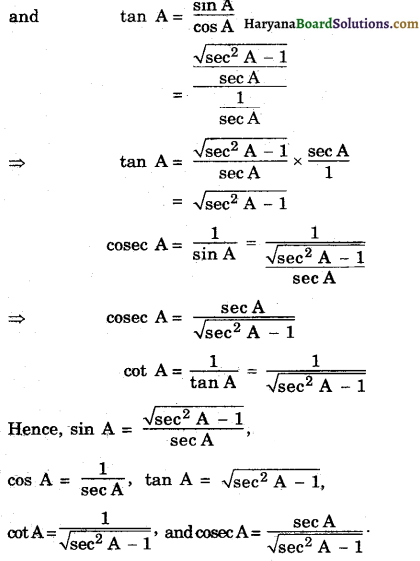
![]()
![]()
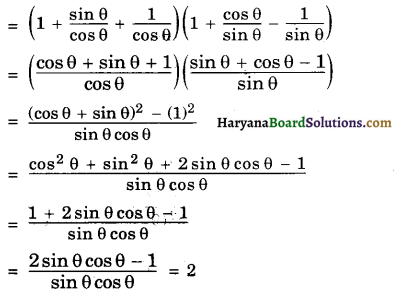

![]()
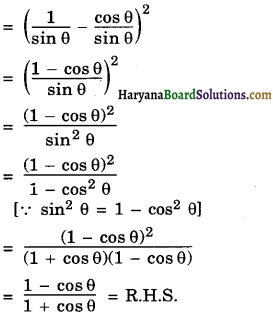
![]()
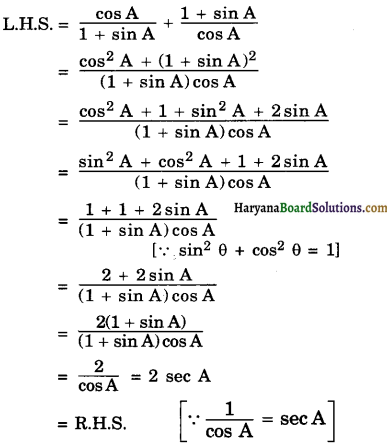
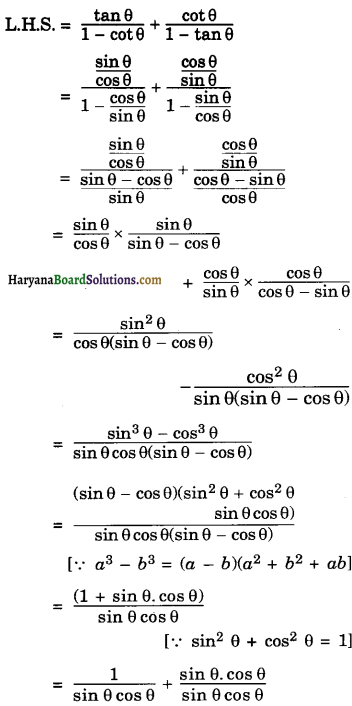
![]()
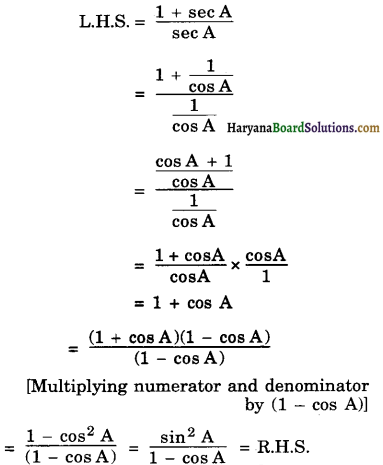

![]()
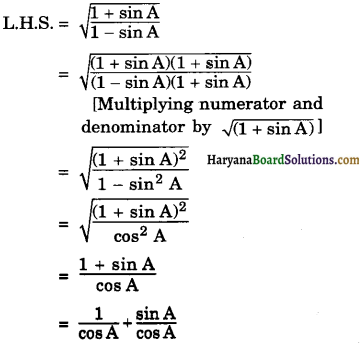

![]()
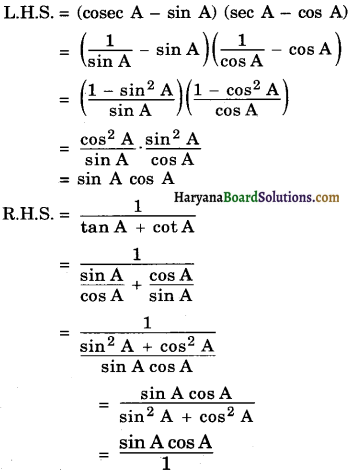
![]()
